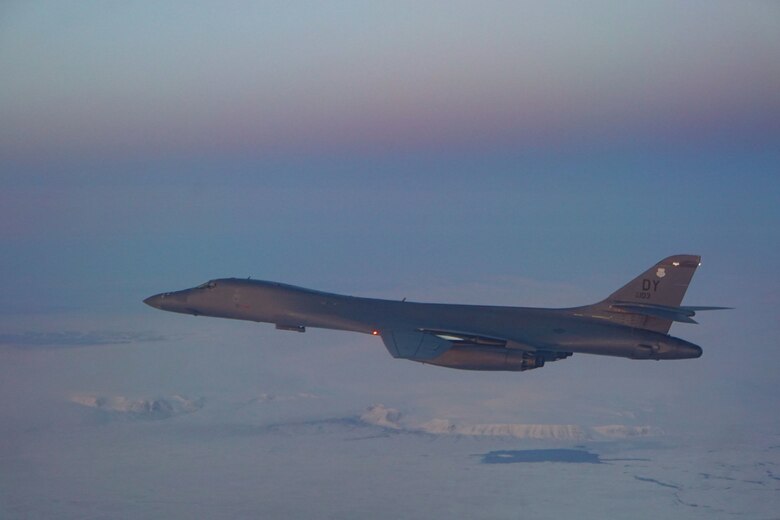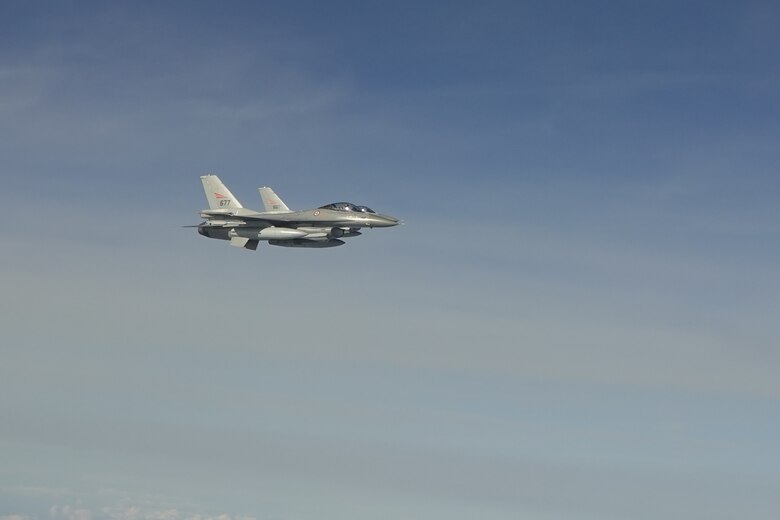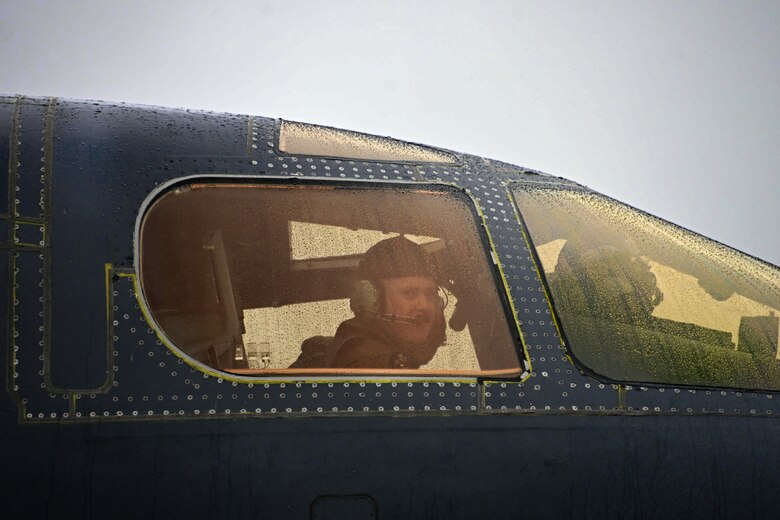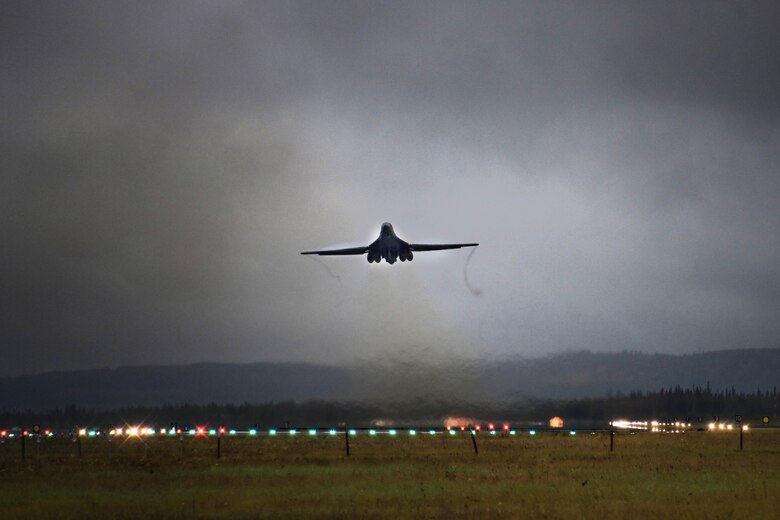B-1B Lancers assigned to the 345th Expeditionary Bomb Squadron conducted training with the Norwegian air force on Sept. 25, in a 16-hour sortie that crossed directly over the North Pole as part of a Bomber Task Force mission here.
The 6,100 nautical mile mission received air refueling support over the Arctic Ocean before spending several hours training with the Norwegian forces off the coast of Greenland and over the Norwegian Sea. It highlighted the U.S. Air Force's capacity to conduct complex operations in multiple areas of responsibility with NATO allies and partners.
Col. Christopher Hawn, 345th EBS commander, said the ability to operate in the Arctic region is important in supporting U.S. European Command (EUCOM) initiatives and in fulfilling the objectives of the 2018 National Defense Strategy, which reoriented the U.S. military's focus from the Middle East to near-peer concerns in Asia and Europe.
"It is about access," he explained. "In a near-peer conflict, the closest point of access could require us to go through the Arctic, so we need to ensure we are well versed in that operational environment."
Operating out of Eielson Air Force Base proved to be an invaluable training opportunity for the unit, whose home station is Dyess AFB, Texas.
"The fact that we can conduct operations at a moment's notice from Alaska to anywhere within the EUCOM area of responsibility sends a strong message," said Lt. Col. Andrew Marshall, 345th EBS director of operations.
Training in the Arctic has grown increasingly important, as the region holds strategic value for U.S. Air and Space Forces as well as its allies and partners. It is also vital to homeland security, as it provides avenues of approach to the U.S. from space, air, sea, and land.
"The harsh conditions and limited access throughout the region make it easy to overlook the value of the Arctic," Marshall said. "However, the increase in global competition for access and control of the region solidifies the Arctic's status as a key territory."
The training also holds tactical importance for aircrews, as it helped them gain familiarity with different operational theaters and unique training environments. Hawn, who has been a B-1 Lancer pilot since 2000, said he did not recall being part of an Arctic mission in the platform prior to these sorties.
"Our corporate knowledge of Arctic operations in the B-1 is not as robust as it is for other regions of the world, and we fully intend to share our insights with the rest of the B-1 enterprise upon our return," he said. "The knowledge and experience we have gained can and will be leveraged for immediate and lasting effect in this community."
The 345th EBS has conducted 16 sorties in seven flying days since arriving for the BTF on Sept. 10. The unit, which is comprised of Reserve Airmen from the 307th Bomb Wing and active-duty Airmen from the 7th Bomb Wing, has had a 100 percent launch and mission effective rate since arriving in theater, a testament to the Total Force Integration package the unit utilizes at Dyess AFB, in which both parties work together daily.
Continuing coverage of this deployment will be available on the USEUCOM website at https://www.eucom.mil and on the 307th Bomb Wing official website at https://www.307bw.afrc.af.mil.

A B-1B Lancer assigned to the 345th Expeditionary Bomb Squadron flies over the Arctic Circle, Sept. 25, 2020. Two bombers assigned to the unit completed flights that passed directly over the North Pole enroute to perform interoperability training with the Norwegian air force. (U.S. Air Force aircrew photo)

Two Norwegian air force F-16V Fighting Falcons accompany a B-1B Lancers assigned to the 345th Expeditionary Bomb Squadron during a training sortie over the Norwegian Sea, Sept. 25, 2020. The B-1's took off from Eielson Air Force Base, Alaska before crossing the Arctic Circle to conduct the training. Training with NATO partners and allies increases interoperability and helps strengthen ties with those countries. (U.S. Air Force air crew photo)

Maj. Charles Kilchrist, 345th Expeditionary Bomb Squadron pilot, performs pre-flight checks on a B-1B Lancer prior to a sortie at Eielson Air Force Base, Alaska, Sept. 24, 2020. The sortie, part of a Bomber Task Force mission in support of U.S. European command initiatives, included going across the Arctic Circle to train with the Norwegian air force. (U.S. Air Force photo by Senior Master Sgt. Ted Daigle)

A B-1B Lancer departs Eielson Air Force Base, Alaska on the it way to the Arctic Circle, Sept. 24, 2020. The sortie, part of a Bomber Task Force mission supporting U.S. European Command initiatives, was designed to give aircrews familiarity with operating in the Arctic. (U.S. Air Force photo by Senior Master Sgt. Ted Daigle)






